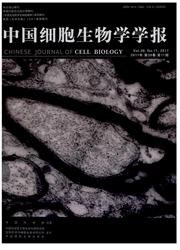

 中文摘要:
中文摘要:
干细胞拥有独特的细胞周期状态,具有自我更新和多向分化的潜能。干细胞一般分为成体干细胞、胚胎干细胞和诱导多功能干细胞三大类。成体干细胞一般处于静止状态,在需要增殖的情况下,可以转换到增殖状态。然而,胚胎干细胞和诱导多功能干细胞会一直保持快速增殖的状态,直到出现分化诱导,中止细胞周期进程。揭示干细胞细胞周期的调控机制,能帮助我们更好地了解干细胞自我更新和分化之间的调控。目前已经鉴定出许多细胞因子及小分子化合物能促进干细胞增殖,但相关的负调控因子却了解不多。Fbxw7(F-box and WD40 repeat domaincontaining 7)作为一种泛素连接酶,能负向调控造血干细胞、神经干细胞、胚胎干细胞、精原干细胞以及肿瘤干细胞等的细胞周期进程,尤其是在调控成体干细胞的静止、增殖和分化方面有重要作用。
 英文摘要:
英文摘要:
Stem cells are identified by their particular cell cycle status, they have the properties of selfrenewal and multipotency. Stem cells undergo self-renewal divisions to support tissues renewal throughout life. Somatic stem cells are maintained in a quiescent condition but change-over from quiescence to proliferation as needed, but embryonic stem cells and induced pluripotent stem cells will keep proliferation until the appearance of differentiation factor resulting in blocking of cell cycle progression. To reveal the mechanisms of cell cycle control in stem cells will provide new insights into the regulatory biology of the cell-cycle transitions. Although various positive regulators of stem cell self-renewal have been discovered, little is known about the negative regulators. Here, this review summarises our understanding of the role of Fbxw7(F-box and WD-40 domaincontaining 7), a component of the Skp1-Cullin-F-box type ubiquitin ligase, which is a negative regulator of stem cell self-renewal, and a key regulator controling the maintenance and differentiation of stem cells, especially the somic stem cells.
 同期刊论文项目
同期刊论文项目
 同项目期刊论文
同项目期刊论文
 期刊信息
期刊信息
